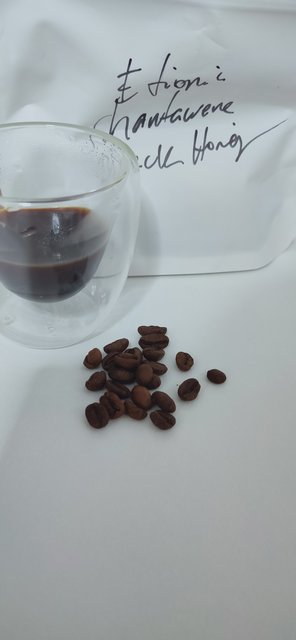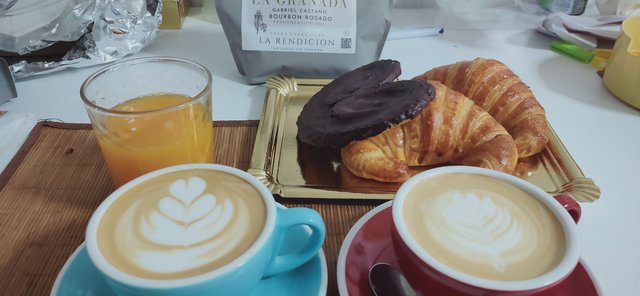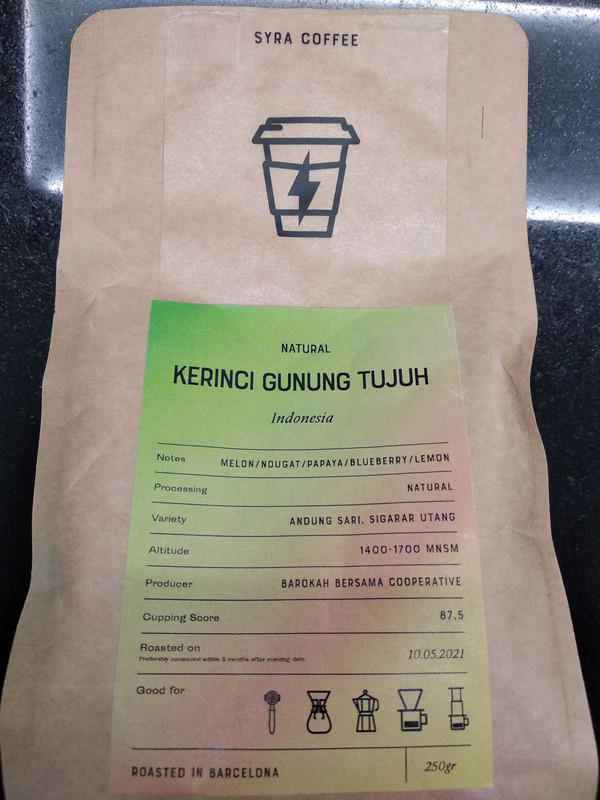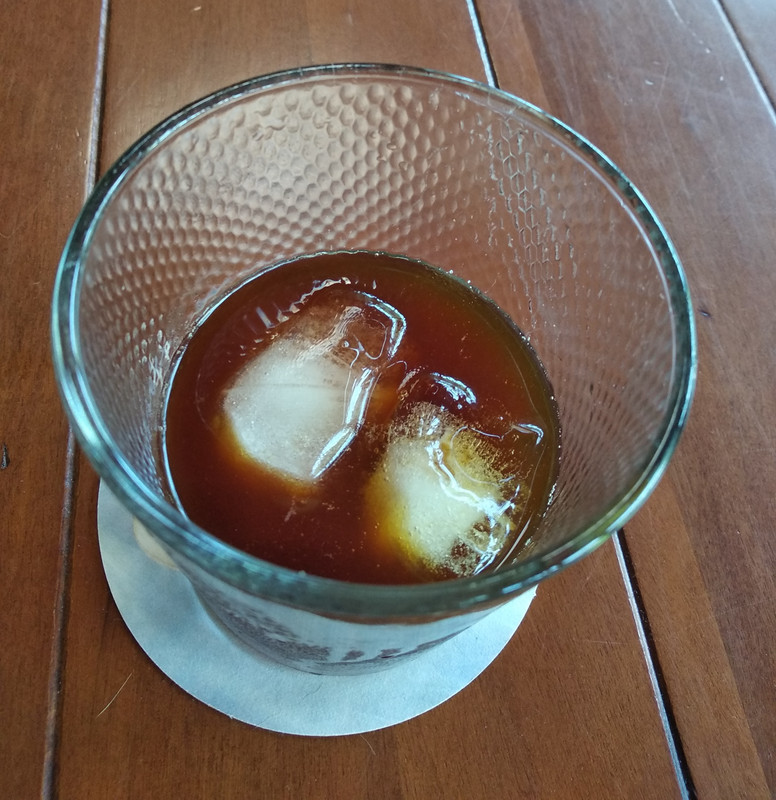Musmakio escribió: ↑03 Jun 2021, 23:11
Bueno, luego también te puede pasar que quieres hacerlo medio bien (como uno buenamente puede, intentando mejorar y aprender) y pones tus impresiones, por ejemplo que un café te ha parecido particularmente dulce y te responden que el café dulce no existe, que si quieres dulce comas turrón.
Y se te pasan las ganas. Con la foto del paquete eso no te pasa.
¡Ánimo @Musmakio! Yo sí te creo


En
The World Atlas of Coffee, de James Hoffmann, la palabra sweet (o sweetness o sweeter) aparece 64 veces, algunas muy de pasada pero otras de manera más importante. Algún ejemplo:
The Pulped natural process
…. yet there is still enough sugar in the surrounding fruit to see a noticeable increase in sweetness and body in the coffee
Coffee Roasting
The roasting process can be controlled to determine three key aspects of how the coffee will taste: acidity, sweetness and bitterness. ....
Sweetness is presented as a bell curve, peaking in between the highs of acidity and bitterness. A good roaster can manipulate where a coffee may be sweetest in relation to its roast degree, producing either a very sweet, yet also quite acidic coffee, or a very sweet, but more muted cup by using a different roast profile.
Sugars in Coffee
Green coffee can contain reasonable quantities of simple sugars. Not all sugars are necessarily sweet to the taste, though simple sugars usually are. Sugars are quite reactive at roasting temperatures and, once the water has evaporated out of the bean, the sugars can begin to react to the heat in different ways. Some go through caramelization reactions, creating the caramel notes found in certain coffees. It should be noted, however, that the sugars that react this way become less sweet, and will eventually start to add bitterness. Other sugars react with the proteins in the coffee in what are known as Maillard reactions. This is an umbrella term covering the browning reactions seen in roasting a piece of meat in the oven, for example, but also when roasting cocoa or coffee.
By the time coffee has finished the first crack stage, there are few or no simple sugars left. They will all have been involved in various reactions resulting in a huge number of aromatic compounds.
Tasting traits
How much sweetness does the coffee have? This is a very desirable trait in coffee, and generally the more the better.
Coffee roasted for espresso
…. If body and mouthfeel are important to you, then you might prefer slightly darker roasts brewed at a 1:1.5 brew ratio. If sweetness and clarity of avour are important, I would recommend a lighter espresso roast brewed at a ratio of 1:2.
Scott Rao, en su
The Professional Barista's Handbook, cita menos frecuentemente la palabra sweet, pero también lo hace
Espresso-Making Techniques in Italy Versus America
…….
I have one grinder, one single basket, and one double basket. I like to use the single basket to make a mellow, sweet espresso normale with moderate brew strength and the double basket to make a double ristretto with more body and brew strength for a cappuccino
Drip Brewing Standards
Coffee made with a lower solubles yield contains a greater proportion of fasterdissolving compounds; these tend to be sour, acidic, bright, and fruity. Higher solubles yields tilt the balance toward slower-dissolving compounds; these generally contribute less acidity and more sweet, bittersweet, and caramel flavors.
En
The Curious Barista's Guide de Tristan Stephenson, se vuelve a incidir 63 veces en el atributo “dulce”
Anatomy of the raw Coffee bean
Approximately 10–20 per cent of that carbohydrate is sucrose, which will go on to provide sweetness, bittersweet caramels and even acidity later on when roasting
-/ -
Fruit that is perhaps only slightly underripe or overripe may meet the minimum requirements of the exporter and roaster, but cup quality will ultimately suffer, as it is the perfectly ripe fruit that contains the most sucrose, and results in the sweeter cup.
-/ -
There’s more to this stage than just drying, however, as important steps are also occurring in the development of sweetness, acidity and bitterness (arising from the breakdown of chlorogenic acids and sugar), which will make themselves known in the flavour of the resulting cup
Sweetness
A roasted coffee bean comprises approximately 0.2 per cent sugars, a relatively small amount by itself, and even smaller once brewed with water, meaning that a typical cup of French press coffee is only around 0.06 per cent sugars. I place the word sugars in italics, since we are not necessarily talking about the everyday white granules that come in a bag, but other longchain polysaccharides that exhibit some sugary characteristics, but with far less actual sweetness than the type of sugar we are familiar with.
A cup of coffee is not inherently sweet, but familiar ‘sweet’ aromatics created during roasting, coupled with trace amounts of complex sugars and caramels, give a perception of sweetness in the cup. A higher viscosity, i.e. thickness in the cup, likely amplifies this perception, too.
I personally see sweetness as an excellent objective for any kind of coffee brewing, with it seeming to peak at just the moment where all other contributing forces balance perfectly.
Britta Folmer incide en los mismos conceptos en su
The Craft and Science of Coffee, con 89 referencias, desde la recolección, al proceso o a la cata:
Naturals provide a beverage with a heavy body, and sweet, smooth, and complex attributes
For Red Honey production .... the natural and fine acidity of the coffee are expressed while revealing the sweet character.
Alejandro Méndez from El Salvador, World Barista Championship 2011, used mucilage to sweeten his winning beverage.
“Sweetness” means a slight perception of sweetness, like very dilute solutions of sugar, but which can be caused by low levels of both acids and salts. The hallmark of a great coffee is a significant sweet taste when the coffee is at room temperature.
Hay muchas más referencias con un carácter demasiado técnico y prefiero no incluirlo aquí.
Maxwell Colonna-Dashwood, en su
The Coffee Dictionary, cita la palabra solo 30 veces (es un diccionario) pero algunas muy significativas:
A lot of perceived sweetness can also be derived from, or elevated by, acidity.
I used a coffee from Bolivia for my first World Barista Championship in 2012. Like the best coffees from this country, it was very sweet and clean and of the Caturra variety.
Lo mismo ocurre con las 34 menciones de
How to Make Coffee, de Lani Kingston, las 19 de
Coffee From Bean to Barista, de Robert W. Thurston, las 31 de
Coffee Everything You Ever Wan, de Jack Frisks o las 36 de
Coffee Isn't A Rocket Science de Sebastien Racineux y Chung-Leng.
Por no citar las abundantes referencias de nuestros compañeros Caturro o Mr Patrick.
¿Quieren todos ellos confundirnos o queremos inventar nosotros la rueda en el siglo XXI?
Si alguien busca en un café que esté dulce como el turrón (a mí me gustan más los de Garrigós, Gorrotxategi o Vicéns) que compre directamente turrón, lo mismo ocurre si queremos que un café ácido nos sepa a boquerones en vinagre.


En todo, también en el dulzor, la acidez o el amargor, hay grados y no deberíamos ponernos absolutos si no somos capaces de comprenderlo.


Mañana más


Entre aconsejar bien y aconsejar mal hay un honrado término medio: no dar consejos














 - By potter985
- By potter985